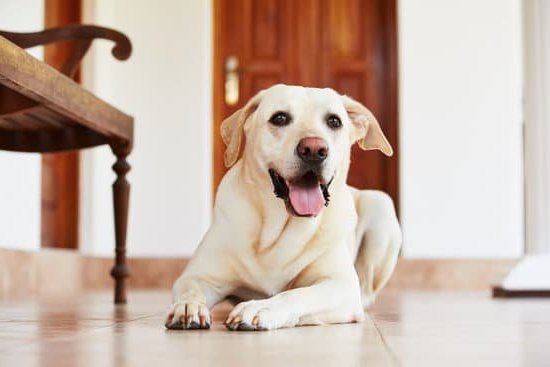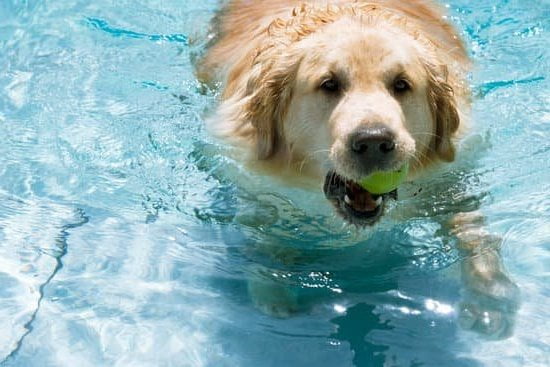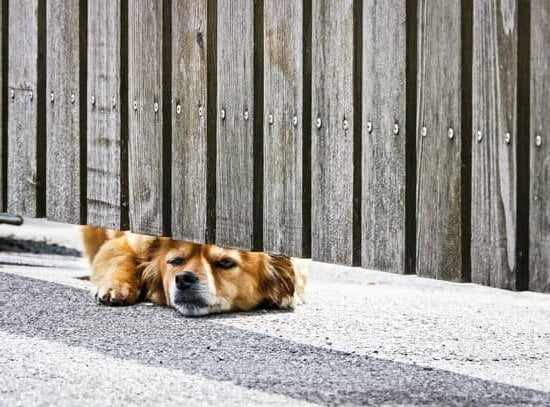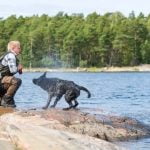How do I train my dog not to be aggressive? This is a common question among pet owners who are dealing with their dog’s aggressive behavior. Aggression in dogs can be concerning and challenging to address, but with the right approach and techniques, it is possible to modify this behavior. In this article, we will explore various methods and strategies for training and managing a dog’s aggression.
Understanding the root of aggression in dogs is crucial in addressing and managing this behavior. There are various factors that can contribute to a dog’s aggressive tendencies, including genetics, early experiences, fear, anxiety, or even medical issues. By gaining insight into these potential causes, you can better understand your dog’s behavior and tailor your training approach accordingly.
Early socialization and training play a significant role in shaping a dog’s behavior, including their tendency towards aggression. Properly introducing your dog to different people, animals, environments, and experiences during their critical developmental periods can help reduce the likelihood of developing aggressive tendencies.
Additionally, consistent obedience training and positive reinforcement from an early age can also significantly impact a dog’s behavior as they grow older. These foundational aspects of training are essential in preventing and addressing aggression in dogs.
The Importance of Early Socialization and Training
Early Socialization
Early socialization is crucial in preventing aggression in dogs. Exposing your dog to various people, animals, and environments during their critical socialization period (between 3 weeks to 14 weeks of age) can help reduce the likelihood of developing aggressive behavior. Introducing them to new experiences in a positive and controlled manner can promote confidence and teach your dog how to appropriately interact with others.
Obedience Training
Basic obedience training is also essential in shaping your dog’s behavior. Teaching commands such as sit, stay, and come can instill discipline and create a strong bond between you and your pet. By establishing yourself as the leader through consistent training, you can prevent dominance-related aggression in your dog.
Professional Assistance
If you have adopted an older dog that may lack early socialization, it’s not too late to seek professional help. Enrolling your pet in obedience classes or working with a certified dog trainer can provide the necessary guidance and support to help modify aggressive tendencies.
A professional can tailor training strategies based on your dog’s specific triggers and behavior patterns. For severe cases of aggression, consulting with a veterinary behaviorist may be necessary for a comprehensive assessment and behavioral modification plan.
Positive Reinforcement Training Techniques for Aggression
Using Positive Reinforcement
Positive reinforcement is a powerful tool to use when training your dog not to be aggressive. This involves rewarding your dog with treats, praise, and affection when they display non-aggressive behavior. For example, if your dog normally reacts aggressively when someone approaches their food bowl, you can start by having the person approach while you feed your dog treats. This will help your dog associate positive experiences with the previously negative situation.
Clicker Training
Clicker training is another effective positive reinforcement technique. It involves using a clicker to make a distinct sound at the exact moment your dog does something right, followed by treating them. Over time, your dog will learn to associate the click with a reward and understand which behaviors lead to positive outcomes.
Avoid Punishment-Based Methods
It’s important to avoid punishment-based methods when dealing with aggression in dogs. Using aversive techniques such as yelling, hitting, or shock collars can actually make the aggression worse and damage the trust between you and your pet. Instead, focus on rewarding good behavior and redirecting or managing aggressive situations in a positive way.
Identifying Triggers and Managing Aggressive Behavior
Aggression in dogs can be triggered by a variety of factors, and it is important for dog owners to understand these triggers in order to effectively manage their pet’s behavior. One common trigger is fear, which can lead to defensive aggression when a dog feels threatened or cornered.
Another trigger is possessiveness, where a dog becomes aggressive when they feel that their possessions, such as food or toys, are being threatened. Understanding these triggers can help owners anticipate and prevent aggressive behavior.
Once triggers are identified, it is important to manage the aggressive behavior with proper training. This may involve desensitizing the dog to the trigger through gradual exposure in a controlled environment.
Additionally, teaching the dog alternative behaviors, such as sitting or staying calm in the presence of the trigger, can redirect their focus and reduce aggression. It is crucial for owners not to punish their dog for showing signs of aggression, as this can exacerbate the problem and erode trust between the owner and pet.
Seeking professional help from a certified animal behaviorist or a qualified dog trainer may also be necessary, especially for cases of severe aggression. These experts have the knowledge and experience to develop a tailored training plan based on the specific triggers and behaviors exhibited by the dog. With patience and dedication, identifying triggers and managing aggressive behavior can lead to significant improvement in a dog’s demeanor and overall well-being.
| Identifying Triggers | Managing Aggressive Behavior |
|---|---|
| Fear, Possessiveness | Desensitization techniques |
| Professional help may be necessary | Avoid punishing the dog for aggressiveness |
Seeking Professional Help for Severe Aggression Cases
Aggression in dogs can be a serious problem that requires professional help in severe cases. If your dog’s aggressive behavior is escalating and becoming a safety concern, it may be time to seek the assistance of a professional dog trainer or animal behaviorist. These individuals are trained to address and manage aggressive behavior in dogs, and they can provide valuable insights and techniques to help you and your pet.
A professional dog trainer or animal behaviorist will conduct a comprehensive assessment of your dog’s behavior to identify the root cause of the aggression. They will then work with you to develop a customized training plan tailored to your dog’s specific needs. This plan may include desensitization exercises, counter-conditioning techniques, and behavior modification strategies aimed at reducing and managing your dog’s aggressive tendencies.
When seeking professional help for severe aggression cases, it is important to find a reputable and experienced trainer or behaviorist who has a successful track record of working with aggressive dogs. Ask for recommendations from your veterinarian or local animal shelters, and conduct thorough research before committing to a professional’s services. Additionally, be prepared for an ongoing commitment to training and behavioral management, as addressing severe aggression in dogs often requires time, patience, and consistency.
| Aspect | Description |
|---|---|
| Assessment | A professional will conduct a comprehensive assessment of the dog’s behavior. |
| Customized Plan | The trainer will work with the owner to develop a customized training plan. |
| Reputation | It is important to find a reputable and experienced trainer. |
Creating a Safe and Positive Environment for Your Dog
When training a dog to overcome aggression, it is essential to create a safe and positive environment for them. This will help in reducing their stress levels and providing them with the necessary comfort to learn new behaviors. Here are some important steps to take in creating a safe and positive environment for your dog:
- Provide a comfortable crate or designated safe space where your dog can retreat when feeling overwhelmed or anxious.
- Keep your home environment calm and organized, as chaos can contribute to stressing out your dog and triggering aggressive behavior.
- Establish a predictable routine for feeding, playtime, exercise, and rest, as this can help reduce anxiety in your dog.
In addition to creating a safe physical environment for your dog, it is also crucial to create a positive emotional environment. This involves paying attention to your dog’s body language and responding positively when they show signs of relaxation or compliance. By doing so, you can build trust with your dog and create an overall positive atmosphere that supports the training process.
Incorporating Exercise and Mental Stimulation to Reduce Aggression
Dogs, like humans, require physical activity and mental stimulation to maintain their overall well-being. In the case of aggressive behavior, incorporating regular exercise and mental stimulation can be beneficial in reducing aggression in dogs. Here are some ways to incorporate exercise and mental stimulation to help reduce aggression in your furry friend:
- Walking: Regular walks are essential for dogs as it enables them to release built-up energy while also providing an opportunity for socialization. When walking your dog, ensure they have proper leash manners and teach them not to pull or lunge at other dogs or people.
- Interactive Toys: Engage your dog with interactive toys that challenge their problem-solving skills and offer mental stimulation. Puzzle toys, treat dispensers, and chew toys can keep your dog engaged while redirecting their focus away from aggressive behavior.
- Obedience Training: Enroll your dog in obedience training classes that encourage positive reinforcement techniques. Training sessions provide mental exercise for dogs as they learn new commands and behaviors.
By incorporating regular exercise and mental stimulation into your dog’s daily routine, you can help reduce their aggressive tendencies while promoting a healthier and happier lifestyle for your pet. Remember that consistency is key, so make sure to maintain a consistent schedule of physical activity and mental enrichment for optimal results.
Consistency and Patience
In conclusion, training an aggressive dog requires a significant amount of patience and consistency. It is important to understand that aggression in dogs can stem from various factors such as fear, territoriality, or lack of socialization. By using positive reinforcement training techniques, dog owners can effectively address and modify their pet’s aggressive behavior.
Early socialization and training play a crucial role in preventing aggression in dogs. Creating a safe and positive environment for your dog, as well as providing ample exercise and mental stimulation, can help reduce the likelihood of aggressive behavior. Identifying triggers and managing aggressive behavior is also essential in the training process, as it allows owners to anticipate and prevent potential outbursts.
For severe cases of aggression, seeking professional help from a certified dog trainer or animal behaviorist is highly recommended. These experts can provide tailored guidance and support for both the dog and its owner. Ultimately, successfully training an aggressive dog requires dedication, understanding, and unwavering consistency on the part of the owner. With time and effort, most dogs can learn to manage their aggression and become well-behaved companions.
Frequently Asked Questions
Can Aggression Be Trained Out of a Dog?
Aggression in dogs can be managed and improved through training and behavior modification techniques. It is important to work with a professional dog trainer or behaviorist to address the underlying causes of aggression and develop a customized training plan for the dog. Consistent training, positive reinforcement, and desensitization can help reduce aggressive behaviors over time.
How Do I Stop a Dog From Being Aggressive?
To stop a dog from being aggressive, it is essential to identify the triggers that lead to the aggression and then address them through positive reinforcement training. It’s important to create a safe and controlled environment for the dog, manage their interactions with potential triggers, and teach them alternative behaviors.
Seeking guidance from an experienced dog trainer or behaviorist is recommended for effectively addressing aggression in dogs.
How Do I Train My Dog to Not Be Aggressive Towards Strangers?
Training a dog to not be aggressive towards strangers requires systematic desensitization and counter conditioning. This involves gradually exposing the dog to strangers in a controlled manner while using positive reinforcement to change their emotional response.
Building trust and confidence in the dog by rewarding calm behavior around strangers is crucial. Consistency, patience, and seeking professional guidance are key factors in successfully training a dog to be non-aggressive towards strangers.

Welcome to the blog! I am a professional dog trainer and have been working with dogs for many years. In this blog, I will be discussing various topics related to dog training, including tips, tricks, and advice. I hope you find this information helpful and informative. Thanks for reading!





